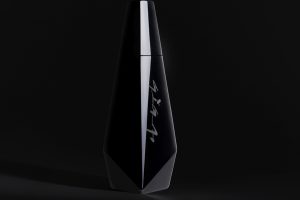Tesla’s revised documents for Gigafactory Berlin have been posted online, and they are a treasure trove of information. The documents provided some new details about Tesla’s planned 4680 battery plant in Gigafactory Berlin, which Elon Musk noted is on track to be one of the world’s largest battery production facilities. They also outlined how Tesla’s 4680 cells are produced.
While sections of the filing pertaining to the planned 4680 battery cell plant in Giga Berlin were blacked out due to sensitive information that could not be made public, the documents show some important tidbits about the upcoming facility. This includes the facility’s cell production operations over four floors, with anode and cathode production on the first floor and tabless cell production on the third floor. The battery plant is massive, requiring large foundations similar to Gigafactory Berlin’s Phase 1 zone.
Most importantly, Tesla also submitted a simplified diagram of its 4680 battery cell production process, though most of the diagram was blacked out in the revised filing’s public release. However, the company provided a brief overview of how its new battery cell will be produced in the upcoming facility (roughly translated through Google Translate).
“The battery the Gigafactory Berlin requires special systems and process steps. The anodes and cathodes consist of coated current collector foils. Copper is used as the material for the anode foil and aluminum is used for the cathode foil. The anode and cathode components are manufactured in mixed processes (A020-01 and A020-02), which only use materials in powder form. The new materials used are tested and approved in our own laboratory (A020-11).
“In order for the powder coating to adhere to the two films, they must first be pre-coated with a thin layer of adhesive (substrate) (A020-03 and A020-04). This substrate is delivered in containers. The pre-coating is necessary because a dry coating with powder takes place. After the anode and cathode components have been mixed, they are applied as a coating to the respective substrate-coated film in order to establish electrical contact (A020-05 and A020-06). The current collector foils, coated with the anode or cathode components, result in the finished anode or cathode.
The revised filings also provided a general idea of how Tesla’s tabless cell production works. Among these is the fact that the finished 4680 cells would be subjected to 10 days’ worth of curing after their formation.
“The anode or cathode is then cut to the required lengths with a laser in the “tabless process” (A020-08). The anode, the cathode and the separator are alternately placed one on top of the other and rolled up into a roll. This roller is then inserted into a metal housing, which is manufactured from steel rollers in a die-cutting and deep-drawing process (A020-07). In the assembly area, the final assembly and filling of the cell takes place with small amounts of electrolyte (approx. 10% of the cell weight) (A020-09).
“The electrolyte is absorbed by the electrode coatings and enables the lithium ions to move back and forth between the anode and cathode. The housing is then closed with a lid in a welding process. The last step is the formation (A020-10) of the cell. In the formation process, the cell is electrically started up by charging and discharging it under different temperature conditions. The finished cell remains in this area for approx. 10 days and is then put to further use. The cells produced are subjected to random quality control in our own laboratory (A020-11).”
A link to Tesla’s filings for Gigafactory Berlin could be found here.





